
TTS Roadsport Workshop Services - Wheel Alignment

Wheel Alignment - Explanation
An explanation of the different alignment angles can be found by clicking one of the following links:
Camber
|
Caster
|
Toe
|
KPI or SAI
|
Thrust Angle
|
Setback
Misaligned Vehicle
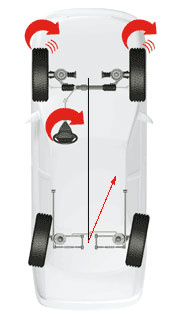
On this vehicle, the front wheels are not aligned to the rear thrust line. This can happen from normal wear and stress, whether your vehicle has adjustable or non-adjustable rear suspension.
To steer straight ahead, you would have to steer the front wheels slightly to the right.
A common result would be that the vehicle would "dog track" and possibly "pull" to the side.
Of course, the angles are exaggerated so you can more easily see the condition. But it takes only a small misalignment to create problems.
Reduced Tyre Wear
Improper alignment is a major cause of premature tyre wear. Over the years, a properly aligned vehicle can add thousands of miles to tyre life.
Better Fuel Mileage
Fuel mileage increases as rolling resistance decreases. Total alignment sets all four wheel parallel which, along with proper inflation, minimizes rolling resistance.
Improved Handling
Does your car pull to one side? Does the steering wheel vibrate? Do you constantly have to move the steering wheel to keep your car traveling straight ahead? Many handling problems can be corrected by total alignment. With all the system components aligned properly, road shock is more efficiently absorbed for a smoother ride.
Safer Driving
A suspension system inspection is part of our alignment procedure. This allows us to spot worn parts before they cause costly problems.
Alignment Process
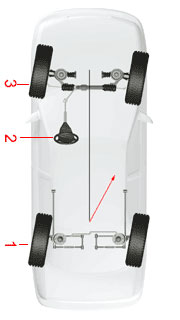
- Angle readings are measured at all four wheels.
- The steering is centered.
- Front wheels are referenced to rear thrust line and set to specifications.
Result - All four wheels are parallel and the steering wheel is centered.
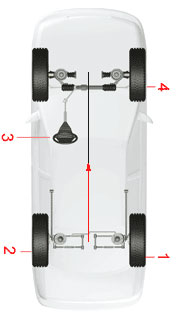
- Angle readings are measured at all four wheels.
- Rear wheels are set to specification. (Rear thrust line corresponds to vehicle centerline.)
- Steering wheel is centered.
- Front wheels are referenced to the rear thrust line and set to specification.
Result: all four wheels are positioned straight ahead and parallel, and the steering wheel is centered.

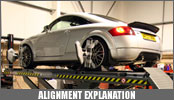 |
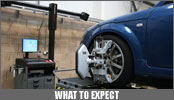 |
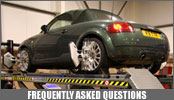 |
||
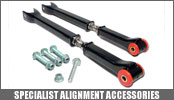 |
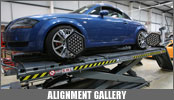 |
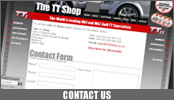 |
||

